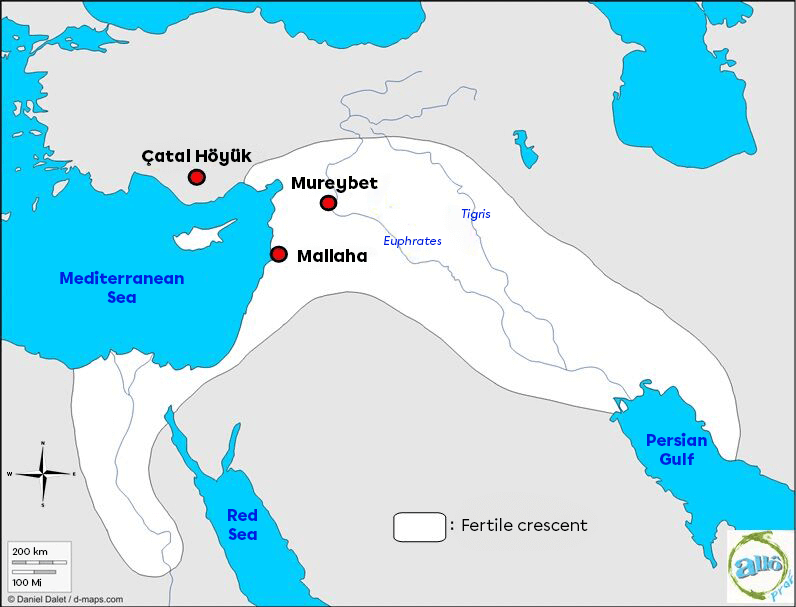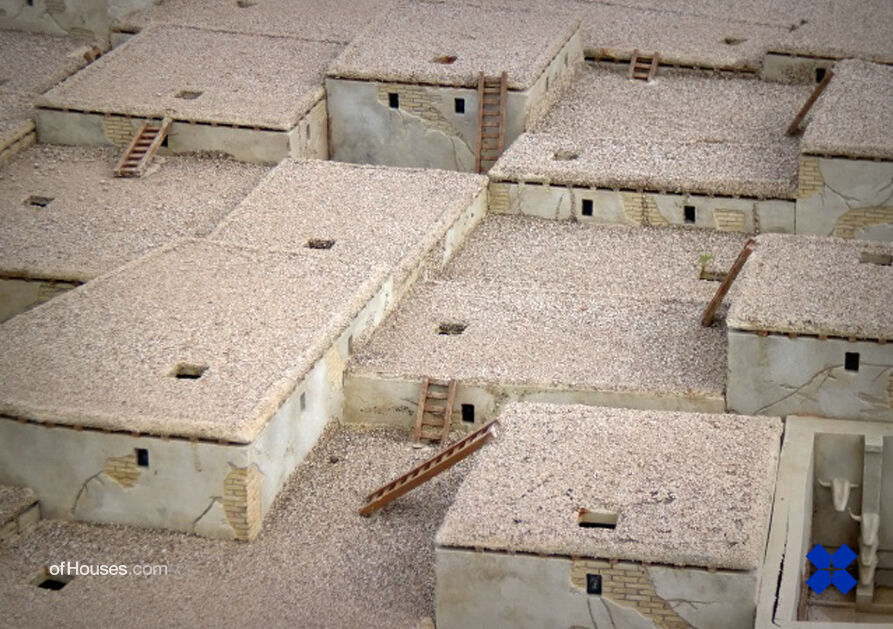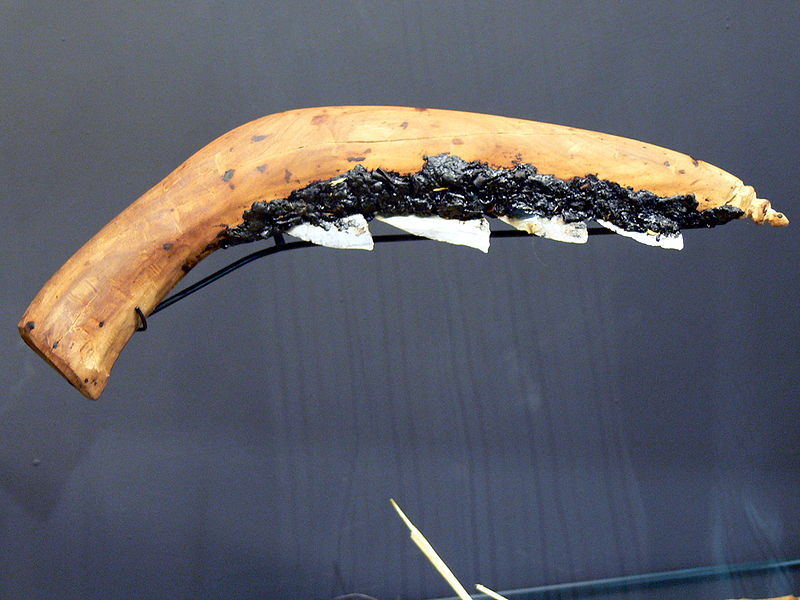The concepts covered in this fact sheet go beyond those seen in secondary school. It is intended as a supplement for those who are curious to learn more.

Mallaha, Mureybet and Çatal Höyük are the oldest sedentary villages of which archaeologists have found remains. All three are located in the Fertile Crescent region.

The Fertile Crescent and the first sedentary villages
Mallaha is a village that dates back to around 12,000 BC, where the first signs of sedentarization have been found. The first archaeological excavations began around 1955.
Mallaha is located in the Fertile Crescent, in Israel's Jordan Valley. The village is on a hill, near a water source, and has a population of between 200 and 300 inhabitants. The houses are partially dug into the ground and are circular or semi-circular in shape. They are made of stone and wood.
The population of Mallaha was sedentary, but did not practise agriculture or livestock farming. Instead, they lived from fishing and hunting.
Several fragments of tools have been found on the site: needles, hooks, spatulas, etc. as well as cooking utensils and flint sickles. The villagers also made jewellery and other decorative objects, many of which have been found during archaeological excavations.
Specialists are not sure whether there was a social hierarchy at Mallaha. The fact that jewellery was found inside some burial sites may indicate that some people were considered more important than others. However, the dead were often buried in the same way, leaving it unclear whether there was any form of social hierarchy at Mallaha.
Mureybet is believed to have been founded around 12,000 BC. The site has been occupied by several villages and has changed a great deal over time. Archaeologists examined this prehistoric site before it was swallowed up following the construction of a dam in 1974.
Mureybet is a site located on the left bank of the Euphrates River in Syria. It covered an area of around two hectares, equivalent to 0.02 km2. In the early days, the village consisted of around 60 houses. Originally, they were round, anchored in the ground and very similar to those in Mallaha, but later they were built at ground level. Gradually, the inhabitants began to prefer rectangular houses built on foundations. At the centre of the village was a community building that could be used as a gathering place for ceremonies or to store food.
Mureybet is one of the sites where the oldest traces of agriculture have been found. Indeed, ancient remains of domesticated plants have been discovered here. One theory is that people lived by foraging or gathering plants and then adopted agriculture as a subsistence activity. The first crops grown were wheat, barley, peas and lentils. Livestock farming began with goats and sheep.
A wide range of tools were produced (cooking utensils, containers, jewellery), as well as weapons. Stone polishing was perfected, making better use of stone.
There seems to have been a social hierarchy at Mureybet, as several people were buried surrounded by objects such as vases or jewellery, which is probably evidence of a higher social position. Also, individual burial sites (the dead were buried individually, not in groups) were much more widespread.
Çatal Höyük (pronounced ‘Chatal Hou-youk’) is a village that dates back to around 7000 BC. The village was discovered in 1961 and only 5% of the site has been excavated to date.
Çatal Höyük is located in Turkey. It is one of the largest villages of the Neolithic period, with a population of 7,000, which is exceptional for its time. It covers an area of around 13 hectares, equivalent to 0.13 km2. A feature of Çatal Höyük is that the houses are built close together, forming a huge terrace with several levels. There were no streets in Çatal Höyük. Residents had to go through the roofs to enter the houses. People carried out many of their daily chores on these roofs. The houses were built on the ruins of previous houses, so that over time the village formed a small hill.

The houses of Çatal Höyük
The people of Çatal Höyük practise farming and livestock farming. They grow wheat, barley and peas, and also rear sheep and cattle. Hunting and fishing are also practised. The artisans of Çatal Höyük produce a wide range of objects, including stone, obsidian and bone tools, terracotta pottery, jewellery, mats and baskets.
Obsidian is a black, glassy stone. Obsidian splinters are as sharp as a metal blade. It is used to make blades and weapons.
The village of Çatal Höyük was probably an important trading centre. Goods made from nearby resources were exchanged for goods from other villages hundreds of kilometres away.
The question of power and whether or not there was a social hierarchy at Çatal Höyük remains ambiguous. There is no certainty, but certain clues found during archaeological excavations suggest that there were people with a certain amount of power.
